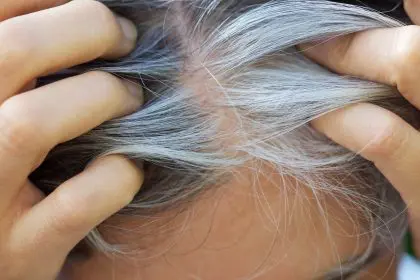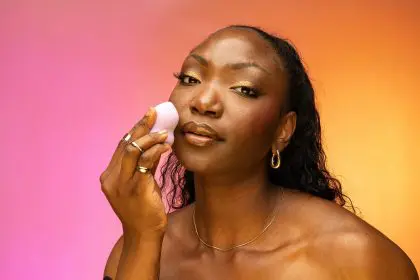You probably think your hair is just sitting there looking pretty (or not so pretty on bad hair days), but it’s actually functioning as a biological record keeper, documenting every major emotional upheaval in your life with the precision of a forensic scientist. Your strands are literally storing evidence of trauma, stress, and emotional chaos in ways that can be measured, analyzed, and surprisingly, traced back to specific life events.
The connection between emotional trauma and hair changes isn’t just some new-age wellness theory – it’s legitimate science that explains why your hair might suddenly start falling out after a breakup, why it changes texture during particularly stressful periods, or why it seems to grow differently after major life events. Your follicles are responding to psychological stress in real time, creating a permanent record of your emotional state that grows out of your scalp.
Most people notice hair changes during traumatic periods but dismiss them as coincidence or blame external factors like diet or weather. But your hair is actually one of the most sensitive indicators of emotional stress in your entire body, often showing signs of trauma before you’re consciously aware of how deeply an experience has affected you.
The stress hormone invasion happening in your follicles
When you experience emotional trauma, your body floods with stress hormones like cortisol, adrenaline, and norepinephrine, and these chemicals don’t just affect your mood – they literally invade your hair follicles and disrupt the normal growth process. Cortisol in particular can shrink hair follicles, shorten the growth phase of hair, and push follicles into premature resting phases.
Think of your hair follicles as tiny factories that normally operate on predictable schedules, producing hair at steady rates with consistent quality. Trauma-induced stress hormones are like having a chemical spill in these factories – everything gets disrupted, production schedules get thrown off, and the quality of the output changes dramatically.
The timing of these hormonal disruptions explains why trauma-related hair changes often appear weeks or months after the actual stressful event. The hair that’s falling out today was affected by stress hormones when it was forming in the follicle months ago, creating a delayed reaction that can make it difficult to connect hair problems with their emotional triggers.
The telogen effluvium phenomenon that sounds scary but isn’t
Telogen effluvium is the scientific name for what happens when emotional stress pushes large numbers of hair follicles into their resting phase simultaneously. Instead of the normal cycle where different follicles are in different growth phases, trauma can synchronize follicles so they all stop producing hair at the same time, leading to dramatic hair loss weeks later.
This condition can be triggered by any significant emotional stress – divorce, job loss, death of a loved one, relationship problems, financial crisis, or even positive but stressful events like moving or starting a new job. The hair loss typically occurs 2-4 months after the triggering event, which is why people often can’t figure out what caused their sudden hair problems.
The good news about telogen effluvium is that it’s usually temporary. Once the stress hormones return to normal levels and your body readjusts, the affected follicles typically resume normal hair production. However, the recovery process can take 6-12 months, and many people panic about the hair loss before understanding that it’s a normal stress response.
The texture changes that reveal your emotional state
Emotional trauma doesn’t just affect how much hair you have – it can completely change the texture, thickness, and behavior of the hair you’re growing. People often notice that their hair becomes finer, more fragile, or changes curl patterns during and after stressful periods, reflecting the impact of stress hormones on the actual structure of new hair growth.
The protein production in hair follicles gets disrupted during times of emotional stress, which can result in hair that’s structurally different from your normal hair. This might manifest as increased breakage, loss of shine, changes in how your hair holds styles, or even alterations in color intensity.
These texture changes can persist for months after the stressful period ends because you’re essentially growing out the evidence of trauma in your hair. The new hair produced during recovery periods often returns to normal characteristics, but the affected hair needs to grow out completely before your hair returns to its pre-trauma state.
The premature graying that isn’t just about age
Emotional trauma can literally turn your hair gray by depleting the melanocyte stem cells responsible for hair pigmentation. Severe stress can permanently damage these cells, leading to premature graying that reflects the biological impact of psychological trauma rather than normal aging processes.
The mechanism behind stress-induced graying involves the sympathetic nervous system, which releases norepinephrine during stress responses. This chemical can permanently deplete the stem cells that regenerate pigment-producing cells, essentially using up your hair’s color reserves faster than they can be replenished.
Unlike temporary hair loss from trauma, stress-induced graying is often permanent because the stem cells responsible for hair pigmentation don’t regenerate once they’re depleted. This makes premature graying a lasting biological marker of emotional trauma that can persist long after other stress symptoms have resolved.
The immune system confusion affecting your scalp
Severe emotional trauma can trigger autoimmune responses that cause your immune system to attack your own hair follicles, mistaking them for foreign invaders. This can lead to conditions like alopecia areata, where perfectly healthy follicles stop producing hair because your body’s defense system has incorrectly identified them as threats.
The connection between emotional stress and autoimmune hair loss highlights how deeply psychological trauma can affect physical systems. When your stress response is chronically activated, it can confuse immune system signaling and create inflammatory conditions that directly impact hair growth.
This immune-mediated hair loss can be particularly distressing because it often creates patchy or complete hair loss that doesn’t follow typical male or female pattern baldness. The unpredictable nature of autoimmune hair loss can create additional emotional stress, potentially perpetuating a cycle where hair loss anxiety contributes to ongoing follicle disruption.
The recovery timeline that tests your patience
Hair recovery from emotional trauma operates on biological timelines that can feel frustratingly slow when you’re dealing with visible hair changes. Because hair grows approximately half an inch per month, it can take 6-18 months to see full recovery from trauma-related hair problems, depending on your hair length and the severity of the initial disruption.
The recovery process often happens in phases, with initial stabilization of hair loss followed by gradual improvement in new hair growth quality. Many people become discouraged during the early recovery period because the damaged hair is still growing out while new, healthier hair is just beginning to emerge from the follicles.
Understanding the timeline of hair recovery can help manage expectations and reduce the additional stress that comes from worrying about hair changes. The biological process of follicle recovery and healthy hair production takes time, and trying to rush the process with aggressive treatments can sometimes interfere with natural healing.
The healing strategies that actually support hair recovery
Supporting hair recovery from emotional trauma requires addressing both the ongoing stress management and the physical needs of healing follicles. This typically involves stress reduction techniques, adequate nutrition to support hair protein synthesis, and sometimes professional support for processing the underlying emotional trauma.
Nutritional support during hair recovery should focus on protein, iron, zinc, and B vitamins that are essential for healthy hair production. However, supplements alone can’t override the effects of ongoing stress hormones, making stress management the most critical factor in supporting hair recovery.
Professional counseling or therapy can be valuable not just for processing trauma but also for developing coping strategies that reduce the likelihood of future stress-related hair problems. Learning to manage stress responses can protect your hair from future emotional upheavals while supporting overall recovery.
What your hair changes are actually telling you
Hair changes during emotional trauma aren’t just cosmetic inconveniences – they’re biological signals that your body is under significant stress and needs support. Recognizing these changes as legitimate responses to psychological stress can help validate your experience and guide appropriate treatment approaches.
The visibility of trauma-related hair changes can sometimes provide external confirmation of internal struggles that might otherwise be minimized or ignored. When your hair is literally showing the effects of emotional stress, it becomes harder to dismiss the significance of what you’re experiencing psychologically.
Understanding the connection between emotional trauma and hair changes can also help reduce shame or embarrassment about stress-related hair problems. These changes reflect normal biological responses to abnormal stress rather than personal failings or vanity concerns, and treating them as legitimate health issues can support both physical and emotional recovery.
















